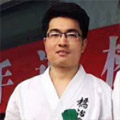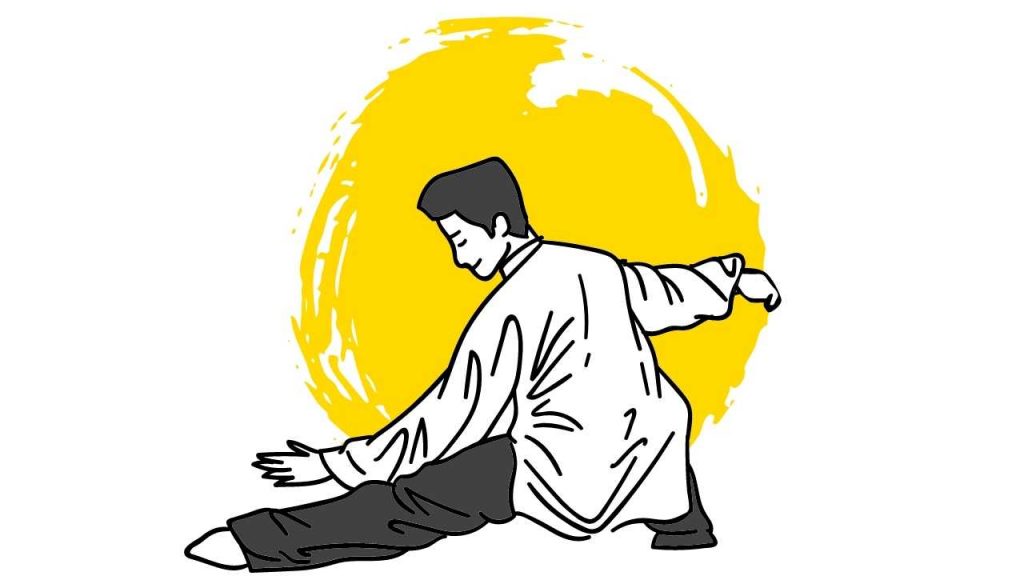To become a Wing Chun master, you need to learn a wide number of techniques. Wing Chun is known for its efficiency of movement and adaptability. Learning its techniques allows you to neutralize opponents, regardless of your size or strength.
But what are these techniques and how can you practice them? Well, that’s what we’re going to find out here. We’ll look at 20 Wing Chun techniques for those at both beginner and advanced levels. Let’s check out what they are.
The Wing Chun techniques can loosely be divided into two categories of either blocks or strikes. Here we’ll start out by looking at blocking moves before moving on to how you can strike your opponent.
Table of Contents
- Blocks
- 1. Biu Sau Block (Thrusting Fingers)
- 2. Tan Sau (Receiving Hand)
- 3. Wu Sau (Guarding Hand)
- 4. Lap Sau (Grabbing Hand)
- 5. Bong Sau (Wing Arm)
- 6. Man Sau (Asking Hand)
- 7. Pak Sau (Slap Block)
- 8. Fook Sau (Subduing Hand)
- 9. Gang/Guan Sau (Splitting Hand)
- 10. Chi Sau (Sticking Hands)
- 11. Gum Sau (Pressing Hand)
- 12. Huen/Hyun Sau (Circling Hand)
- 13. Kwan Sau (Rotating Hand)
- 14. Seung Chi Sau (Double Sticking Hands)
- Strikes
- Wing Chun Techniques – FAQs
Blocks
1. Biu Sau Block (Thrusting Fingers)
Biu Sau can be used as either a blocking or striking move. With the block, it’s used to deflect any type of attack to the head. You can adjust the Biu Sau easily depending on the height of your opponent’s strike.
2. Tan Sau (Receiving Hand)
One of the best Wing Chun blocking techniques, the Receiving Hand uses long bridge energy to block any strike from high to low. You can do without bending the elbow and keeping your arm engaged. It’s useful for both blocking kicks and punches.
3. Wu Sau (Guarding Hand)
The Wu Sau is another of the best techniques to learn for those just starting out. This basic technique allows you to block any close attacks. You can also use it as a base to launch strikes.
4. Lap Sau (Grabbing Hand)
If you want to be a master of counter attacking, the Lap Sau is a great technique to learn. Here you can throw your opponent off balance with a sharp pull and then deliver one of your strikes with a huge amount of force.
5. Bong Sau (Wing Arm)
This is one of the more complex Wing Chun movements and is therefore, more suited to those at an advanced level. This is perfect for deflecting punches or gaining control of the wrists. It works well with the Lap Sau for an even more effective technique combination.
6. Man Sau (Asking Hand)
Do you feel vulnerable to overhand strikes? If so, the Man Sau can help out a lot. Here you can use it to effectively block high punches and then combine it with an elbow strike to hurt your opponent.
7. Pak Sau (Slap Block)
The Pak Sau is one of the simpler blocking techniques and therefore vital for beginners to learn. Here your reflexes need to be sharp in order to use a palm block to divert away any of your opponent’s strikes.
8. Fook Sau (Subduing Hand)
The Fook Sau is one of the best beginner Wing Chun techniques and great for anyone who wants to learn how to bridge a hand. Learning this technique helps you to get a better understanding of positioning. Once you learn Fook Sau, you can use it as a foundation for more advanced striking and blocking techniques.
9. Gang/Guan Sau (Splitting Hand)
This is one of the most effective Wing Chun hand techniques. Often spelled as either Gang Sau or Guan Sau, this is a great block that can stop any strike to your midsection. Without it, you can be highly vulnerable to any strike to the ribs. Being skilled in the Splitting Hand also allows you to quickly counter attack.
10. Chi Sau (Sticking Hands)
This technique is great for those starting out as it will improve your reflexes while also helping you to develop great form. Here the focus is on knowing how to react to the feeling of your opponent rather than just relying on sight alone.
11. Gum Sau (Pressing Hand)
Translated to either Pressing or Pinning Hand, this allows you to disable your opponent’s strike by blocking their arm. It’s an open handed technique which can either be used against a punch or kick.
12. Huen/Hyun Sau (Circling Hand)
To master the Huen Sau is to have perfect control over your positioning at all times. The Circling Hand can be performed in any direction and allows you to alter your position while still remaining in control.
13. Kwan Sau (Rotating Hand)
Here we have a more advanced blocking skill that can be used to block a wide range of different attacks. It allows you to roll out of a trap and block any type of punch or kick, whether it is low or high.
14. Seung Chi Sau (Double Sticking Hands)
This is simply a two-handed version of the Chi Sau technique. This technique is brilliant for defending against close attacks. It can also help you to be in control of the fight.
Strikes
15. One Inch Punch
Perhaps the most famous Wing Chun move, the one inch punch allows you to generate a huge amount of power from just a short distance. Made famous by Bruce Lee, these Wing Chun Kung Fu techniques allow you to still make effective strikes from close range.
16. Wing Chun Double Punch
The double punch is where both fists are thrust out until they make contact. This is able to generate a lot of force as you can put your full weight into the punch. Both punches land at the same time which can confuse and overwhelm an opponent.
17. Pai Jarn (Hacking Elbow Strike)
One of the most effective strikes is the Pai Jarn. This is a horizontal hacking elbow that can be executed on a turn towards or away from your opponent. It’s great for hitting your opponent at close range.
18. Biu Sau Strike (Thrusting Fingers)
As mentioned above, the Biu Sau can be used in attack or defense. In attack, it can be used to hurt your opponent in their soft spots, such as the eyes and neck. However, you need strong fingers to execute the strike.
19. Fak Sau (Whisking Hand)
Also available as a block, the Fak Sau (or Fak Sao) is a chopping strike against someone who is away from your centerline. It allows more flexibility, especially if you’ve lost your position, making it one of the best Wing Chun fighting techniques.
20. Lin Wan Kuen (Chain Punch)
Made famous as one of the Ip Man Wing Chun techniques, this technique is one that relies on a rapid succession of punches. You need excellent speed to perform it effectively but if you can, it can easily overwhelm your opponent. It can also be used in self-defense.
Wing Chun Techniques – FAQs
How many techniques are in Wing Chun?
The number of techniques in Wing Chun can change depending on who you ask, as some of the moves are very similar. Here we have looked at 20 core techniques that are important to learn if you plan to become effective in martial arts.
Can I teach myself Wing Chun?
It’s possible to learn some of the Wing Chun basic techniques and principles of Wing Chun by yourself but doing so will only get your knowledge so far. To practice Wing Chun at an advanced level, you’d need to have guidance from an experienced practitioner.
Are Wing Chun techniques effective in real fights?
The techniques and theory of Wing Chun can be effective in real fights once you’ve been properly trained. It is known as a great martial art in close combat and one that can give a smaller person a level playing field. However, it does have some practical drawbacks such as the lack of power generated and the vulnerability to a takedown.


